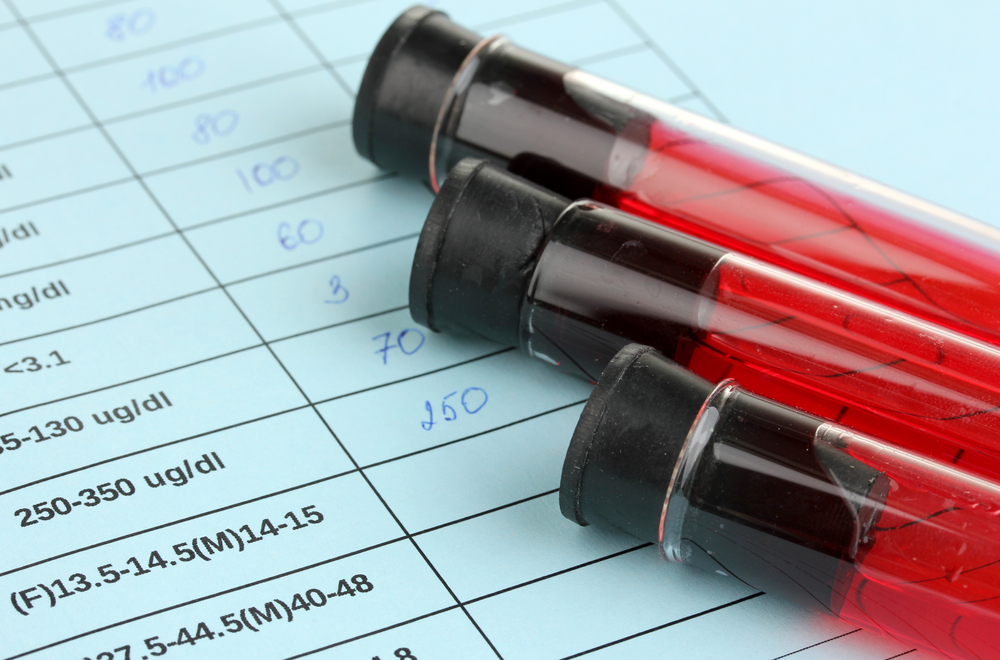Last Updated: September, 2021
Acceptance of the Terms of Use
Welcome to the website of Delcath Systems, Inc. and its subsidiaries (“Delcath,” the “Company” or “we”). The following terms and conditions, together with any documents they expressly incorporate by reference (collectively, these “Terms of Use”), govern your access to and use of this site and other sites Delcath may own and operate, including any content, functionality, and services offered on or through these sites: www.chemosat.com; www.againsttheodds.com, and www.lebengewinnen.de (the “Websites”).
Please read the Terms of Use carefully before you start to use the Websites. These Terms of Use were last modified as of the date set forth above and may have changed since your last visit to this site. By using this site, you accept and agree to be bound to, and abide by, these Terms of Use and our Privacy Policies, available at each of the Websites, incorporated these Terms of Use. If you do not agree with these Terms of Use or the Privacy, you must not access or use the Websites.
The Websites are offered and available to users who are 16 years of age or older. By using this site, you represent and warrant that you are at least 16 years old. If you are not, you must not access or use the Websites.
Information About You and Your Visits to the Websites and Privacy
Please refer to our Privacy Policies for more details about how we may collect and use your personal information in or in connection with the Websites. Delcath’s use of your personal information is governed by our Privacy Policies, which is incorporated herein by reference. You agree that by your use of the Websites you consent to the collection and use of your personal information (as set forth in our Privacy Policies).
Security
We use reasonable security measures that are designed to protect personal information from accidental loss, disclosure, misuse, and destruction. These measures may include regular review of our data collection and storage processes, data encryption, and security software on our networks and servers. Please be aware, however, that no data security measures can be completely effective. Consequently, you understand and agree that such steps do not guarantee that use of the Websites are invulnerable to all security breaches, and that Delcath makes no warranty or representation nor can it ensure that use of any of our Websites are protected from viruses, security threats, or other vulnerabilities. You transmit information to us at your own risk.
Changes to the Terms of Use
We may revise and update these Terms of Use from time to time in our sole discretion. All changes are effective immediately when we post them and apply to all access to, and use of, the Websites thereafter. However, any changes to the dispute resolution provisions set forth in “Governing Law and Jurisdiction” below will not apply to any disputes for which the parties have actual notice on, or prior to, the date the change is posted on the Websites.
Your continued use of the Websites following the posting of revised Terms of Use means that you accept and agree to the changes. You are expected to check this page regularly, so you are aware of any changes, as they are binding to you.
Accessing the Websites and Account Security
We reserve the right to cease operation of, or modify, these Websites, and any service or material we provide on the Websites, in our sole discretion without notice. We will not be liable if, for any reason, all or any part of the Website is unavailable at any time or for any period. From time to time, we may restrict access to some parts of the Websites, or the entire Websites, to users.
You are responsible for:
- Making all arrangements necessary for you to have access to the Websites;
- Ensuring that all persons who access the Websites through your internet connection are aware of these Terms of Use and comply with them;
- You may be offered the opportunity to provide certain information through the Websites. It is a condition of your use of the Websites that all the information you provide on the Websites is correct, current, and complete. You agree that all information you provide to these Websites or otherwise, including without limitation, through the use of any interactive features on the Websites, is governed by our Privacy Policies, and you consent to all actions we take with respect to your information consistent with our Privacy Policies.
Intellectual Property Rights
The Websites and their entire contents, features, and functionality (including, but not limited to, all information, software, text, displays, images, video and audio, and the design, selection, and arrangement thereof) are owned by the Company, its licensors, or other providers of such material, and are protected by United States and international copyright, trademark, patent, trade secret, and other intellectual property or proprietary rights laws.
These Terms of Use permit you to use the Websites for your personal, noncommercial use only. You must not reproduce, distribute, modify, create derivative works of, publicly display, publicly perform, republish, download, store, or transmit any of the material on our Websites, except as follows:
- Your computer may temporarily store copies of such materials in RAM incidental to your accessing and viewing those materials;
- You may store files that are automatically cached by your Web browser for display enhancement purposes;
- You may print or download one copy of a reasonable number of pages of the Websites for your own personal, noncommercial use, and not for further reproduction, publication, or distribution;
- You may use features of the Websites that permit you to forward website content, but only if you do so in a manner consistent with these Terms of Use
You must not:
- Modify copies of any materials from our Websites
- Delete or alter any copyright, trademark, or other proprietary rights notices from copies of materials from these Websites access or use for any commercial purposes any part of the Websites or any services or materials available through the Websites.
If you print, copy, modify, download, or otherwise use or provide any other person with access to any part of the Websites in breach of the Terms of Use, your right to use the Websites will cease immediately and you must, at our option, return or destroy any copies of the materials you have made. No right, title, or interest in or to the Websites or any content on the Websites is transferred to you, and all rights not expressly granted are reserved by the Company. Any use of the Websites not expressly permitted by these Terms of Use is a breach of these Terms of Use and may violate copyright, trademark, and other laws.
Trademarks
The Company name and Company logo and all related names, logos, product and service names, designs, and slogans are trademarks of the Company or its affiliates or licensors. You must not use such marks without the prior written permission of the Company. All registered and unregistered trademarks, including other names, logos, product and service names, designs, and slogans on these websites are the trademarks of their respective owners.
Prohibited Uses
You may use the Websites only for lawful purposes and in accordance with these Terms of Use.
You agree not to use the Websites:
- In any way that violates any applicable federal, state, local, or international law or regulation (including, without limitation, any laws regarding the export of data or software to and from the United States of America, Australia, Singapore, United Kingdom or other European Union Countries);
- To transmit, or procure the sending of, any advertising or promotional material, including any “junk mail,” “chain letter,” or “spam,” or any other similar solicitation;
- To impersonate or attempt to impersonate the Company, a Company employee, another user, or any other person or entity (including, without limitation, by using e-mail addresses associated with any of the foregoing;
- To engage in any other conduct that restricts or inhibits anyone’s use or enjoyment of the Websites or which, as determined by us, may harm the Company or users of the Websites or expose them to liability;
- Use the Websites in any manner that could disable, overburden, damage, or impair the Websites, or interfere with any other party’s use of the Websites;
- Use any robot, spider, or other automatic device, process, or means to access the Websites for any purpose, including monitoring or copying any of the material on the Websites;
- Use any manual process to monitor or copy any of the material on the Websites or for any other unauthorized purpose without our prior written consent;
- Use any device, software, or routine that interferes with the proper working of the Websites;
- Introduce any viruses, Trojan horses, worms, logic bombs, or other material that is malicious or technologically harmful;
- Attempt to gain unauthorized access to, interfere with, damage, or disrupt any parts of the Websites, the server on which the Websites are stored, or any server, computer, or database connected to the Websites;
- Attack the Websites via a denial-of-service attack or a distributed denial-of-service attack; and
- Otherwise attempt to interfere with the proper working of the Websites.
Reliance on Information Posted
The information presented on or through theses Websites is made available solely for general information purposes. We do not warrant the accuracy, completeness, or usefulness of this information. Any reliance you place on such information is strictly at your own risk. We disclaim all liability and responsibility arising from any reliance placed on such materials by you or any other visitor to the Websites, or by anyone who may be informed of any of its contents.
These Websites may include content provided by third parties. All statements expressed in these materials, and all articles and responses to questions and other content, other than the content provided by the Company, are solely the opinions and the responsibility of the person or entity providing those materials. These materials do not necessarily reflect the opinion of the Company. We are not responsible or liable to you or any third party for the content or accuracy of any materials provided by any third parties.
The information and advice published or made available through these Websites is for informational purposes only, is not a substitute for professional medical advice or services, and does not constitute or establish a physician-patient relationship. You should not use the information on these Websites for diagnosing or treating a medical or health condition. You should consult a physician or other health care provider in all matters relating to your health, and particularly with respect to any symptoms that may require diagnosis or medical attention. Any action on your part in response to the information provided in these Websites is at your discretion.
The information included in (or accessible from) these Websites may contain forward-looking statements that involve risks and uncertainties, including statements with respect to the safety, efficacy, potential benefits, and successful development of certain treatments or products which contain factors that are beyond Delcath’s control. Among the factors that could cause actual results to differ materially from those indicated by such forward-looking statements are: the submission, acceptance, and approval of regulatory filings; the results of clinical trials with respect to products under development; the scope of Delcath’s patent protection with respect to such product candidates; the commercial success of Delcath’s products; the ability of the Company to attract and retain qualified personnel; the performance of Delcath’s licensees; the availability of sufficient funds to continue research and development efforts; and certain other factors that may affect future operating results and are detailed in any periodic reports filed with the Securities and Exchange Commission.
When used on the Websites, words like “anticipate,” “believe,” “expect,” “intent,” “may,” “plan,” “predict,” “project,” “target,” “potential,” “will,” “could,” “should,” “continue,” and similar expressions are intended to identify forward-looking statements designed to fall with securities law safe harbors for forward-looking statements. Such forward-looking statements involve substantial risks and uncertainties that could differ significantly from those expressed or implied by the forward-looking statements. None of the information contained on the Websites is intended to be, and shall not be deemed to be, incorporated into any of Delcath’s securities filings or documents. Delcath undertakes no obligation to update or revise any forward-looking statements.
Changes to the Websites
We may update the content on the Websites from time to time, but its content is not necessarily complete or up-to-date. Any of the material on the Websites may be out of date at any given time, and we are under no obligation to update such material.
Linking to the Websites
You may link to our homepage, provided you do so in a way that is fair and legal, and does not damage our reputation or take advantage of it, but you must not establish a link in such a way as to suggest any form of association, approval, or endorsement on our part.
Subject to the foregoing, you must not:
- Establish a link from any website that is not owned by you;
- Cause the Websites or portions of them to be displayed, or appear to be displayed by, for example, framing, deep linking, or in-line linking, on any other site;
- Link to any part of the Websites other than the homepages; and
- Otherwise take any action with respect to the materials on the Websites that is inconsistent with any other provision of these Terms of Use.
You agree to cooperate with us in causing any unauthorized framing or linking immediately to cease. We reserve the right to withdraw linking permission without notice.
We may disable any links at any time without notice at our discretion.
Links from the Websites
The Websites contains links to other sites and resources provided by third parties. These links are provided for your convenience only. We have no control over the contents of those sites or resources, and accept no responsibility for them or for any loss or damage that may arise from your use of them. If you decide to access any of the third-party websites linked to theWebsites, you do so entirely at your own risk and subject to the terms and conditions of use for, and the policies (including privacy policies) of, such websites. Before you choose to access other websites from this site, please be certain that you review the Privacy Notice and terms of use of that social media platform or website.
Geographic Restrictions
Delcath operates its business globally, and the Websites are maintained in locations including the United States. We make no claims that the Websites or any of its content is accessible or appropriate in any particular country or jurisdiction. Access to the Websites may not be legal by certain persons or in certain countries. If you access the Websites from outside of its country or countries of operation, you do so on your own initiative and are responsible for compliance with local laws.
Disclaimer of Warranties
YOU UNDERSTAND THAT WE CANNOT AND DO NOT GUARANTEE OR WARRANT THAT FILES OR OTHER DATA AVAILABLE FOR ACCESS OR DOWNLOADING FROM THE INTERNET OR THE WEBSITES WILL BE FREE OF VIRUSES OR OTHER DESTRUCTIVE CODE. YOU ARE RESPONSIBLE FOR IMPLEMENTING SUFFICIENT PROCEDURES AND MECHANISMS TO SATISFY YOUR PARTICULAR REQUIREMENTS FOR ANTI-VIRUS PROTECTION AND ACCURACY OF DATA INPUT AND OUTPUT, AND FOR MAINTAINING A MEANS EXTERNAL TO OUR SITE FOR ANY RECONSTRUCTION OF ANY LOST DATA. WE WILL NOT BE LIABLE FOR ANY LOSS OR DAMAGE CAUSED BY A DISTRIBUTED DENIAL-OF-SERVICE ATTACK, VIRUSES, OR OTHER TECHNOLOGICALLY HARMFUL MATERIAL THAT MAY INFECT YOUR COMPUTER EQUIPMENT, COMPUTER PROGRAMS, DATA, OR OTHER PROPRIETARY MATERIAL DUE TO YOUR USE OF THE WEBSITES OR ANY SERVICES OR ITEMS OBTAINED THROUGH THE WEBSITE OR TO YOUR DOWNLOADING OF ANY MATERIAL POSTED ON IT, OR ON ANY WEBSITE LINKED TO IT.
YOUR USE OF THE WEBSITES, ITS CONTENT, AND ANY SERVICES OR ITEMS OBTAINED THROUGH THE WEBSITES IS AT YOUR OWN RISK. THE WEBSITES, THEIR CONTENT, AND ANY SERVICES OR ITEMS OBTAINED THROUGH THE WEBSITES ARE PROVIDED ON AN “AS IS” AND “AS AVAILABLE” BASIS, WITHOUT ANY WARRANTIES OF ANY KIND, EITHER EXPRESS OR IMPLIED. NEITHER THE COMPANY NOR ANY PERSON ASSOCIATED WITH THE COMPANY MAKES ANY WARRANTY OR REPRESENTATION WITH RESPECT TO THE COMPLETENESS, SECURITY, RELIABILITY, QUALITY, ACCURACY, OR AVAILABILITY OF THE WEBSITE. WITHOUT LIMITING THE FOREGOING, NEITHER THE COMPANY NOR ANYONE ASSOCIATED WITH THE COMPANY REPRESENTS OR WARRANTS THAT THE WEBSITES, CONTENT, OR ANY SERVICES OR ITEMS OBTAINED THROUGH THE WEBSITES WILL BE ACCURATE, RELIABLE, ERROR-FREE OR UNINTERRUPTED, THAT DEFECTS WILL BE CORRECTED, THAT OUR SITE OR THE SERVER THAT MAKES IT AVAILABLE ARE FREE OF VIRUSES OR OTHER HARMFUL COMPONENTS, OR THAT THE WEBSITES OR ANY SERVICES OR ITEMS OBTAINED THROUGH THE WEBSITES WILL OTHERWISE MEET YOUR NEEDS OR EXPECTATIONS.
THE COMPANY HEREBY DISCLAIMS ALL WARRANTIES OF ANY KIND, WHETHER EXPRESS OR IMPLIED, STATUTORY OR OTHERWISE, INCLUDING, BUT NOT LIMITED TO, ANY WARRANTIES OF MERCHANTABILITY, NONINFRINGEMENT, AND FITNESS FOR PARTICULAR PURPOSE.
THE FOREGOING DOES NOT AFFECT ANY WARRANTIES WHICH CANNOT BE EXCLUDED OR LIMITED UNDER APPLICABLE LAW.
Limitation on Liability
IN NO EVENT WILL THE COMPANY, ITS AFFILIATES OR THEIR LICENSORS, SERVICE PROVIDERS, EMPLOYEES, AGENTS, OFFICERS, MANAGERS, OR DIRECTORS BE LIABLE FOR DAMAGES OF ANY KIND, UNDER ANY LEGAL THEORY, ARISING OUT OF, OR IN CONNECTION WITH, YOUR USE, OR INABILITY TO USE, THE WEBSITES, ANY WEBSITES LINKED TO IT, ANY CONTENT ON THE WEBSITES OR SUCH OTHER WEBSITES, OR ANY SERVICES OR ITEMS OBTAINED THROUGH THE WEBSITE OR SUCH OTHER WEBSITES, INCLUDING ANY DIRECT, INDIRECT, SPECIAL, INCIDENTAL, CONSEQUENTIAL, OR PUNITIVE DAMAGES, INCLUDING, BUT NOT LIMITED TO, PERSONAL INJURY, PAIN AND SUFFERING, EMOTIONAL DISTRESS, LOSS OF REVENUE, LOSS OF PROFITS, LOSS OF BUSINESS OR ANTICIPATED SAVINGS, LOSS OF USE, LOSS OF GOODWILL, LOSS OF DATA, AND WHETHER CAUSED BY TORT (INCLUDING NEGLIGENCE), BREACH OF CONTRACT, OR OTHERWISE, EVEN IF FORESEEABLE.
THE FOREGOING DOES NOT AFFECT ANY LIABILITY WHICH CANNOT BE EXCLUDED OR LIMITED UNDER APPLICABLE LAW.
Indemnification
You agree to defend, indemnify, and hold harmless the Company, its affiliates, licensors, and service providers, and its and their respective officers, directors, managers, employees, contractors, agents, licensors, suppliers, successors, and assigns from and against any claims, liabilities, damages, judgments, awards, losses, costs, expenses, or fees (including reasonable attorneys’ fees) arising out of, or relating to, your violation of these Terms of Use or your use of the Websites including, but not limited to, any use of the Websites’ content, services, and products other than as expressly authorized in these Terms of Use or your use of any information obtained from the Websites.
Governing Law and Jurisdiction
All matters relating to these Terms of Use and any dispute or claim arising therefrom or related thereto (in each case, including non-contractual disputes or claims), shall be governed by and construed in accordance with the laws of Ireland and the Courts of Ireland shall have exclusive jurisdiction over any dispute.
Waiver and Severability
No waiver by the Company of any term or condition set forth in these Terms of Use shall be deemed a further or continuing waiver of such term or condition or a waiver of any other term or condition, and any failure of the Company to assert a right or provision under these Terms of Use shall not constitute a waiver of such right or provision.
If any provision of these Terms of Use is held by a court or other tribunal of competent jurisdiction to be invalid, illegal, or unenforceable for any reason, such provision shall be eliminated or limited to the minimum extent such that the remaining provisions of the Terms of Use will continue in full force and effect.
Entire Agreement
These Terms of Use (as amended from time to time), including policies incorporated herein (e.g., Privacy Policies) constitute the entire agreement between you and Delcath regarding the Websites and your use of the Websites or the Content, and supersede any prior agreement or understanding, arrangements, undertaking, or proposal, written or oral, between you and Delcath in relation to such matters. No oral representation or agreement given by any party shall alter the interpretation of the Terms of Use.
How to Contact Us
If you have any questions or comments about these Terms of Use or this site, please contact us at privacy@delcath.com
Thank you for visiting our website.

 Serum Bilirubin
Serum Bilirubin Liver Enzymes
Liver Enzymes Angiography
Angiography Liver Biopsy
Liver Biopsy
